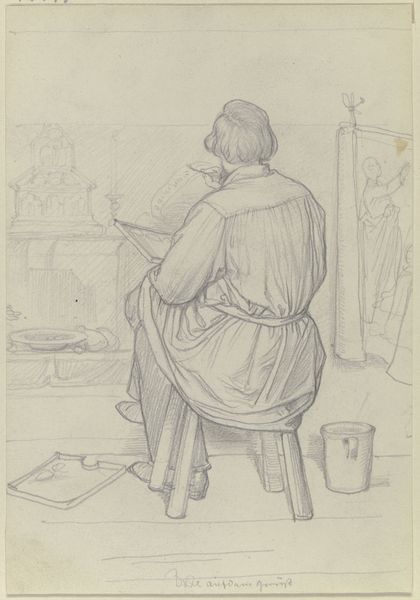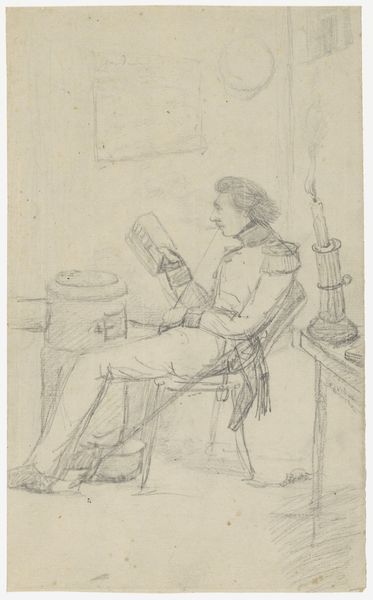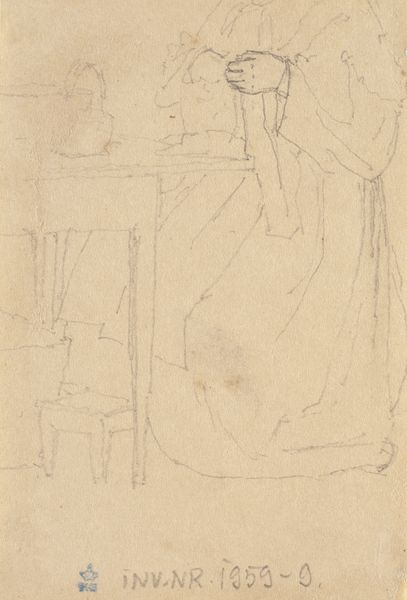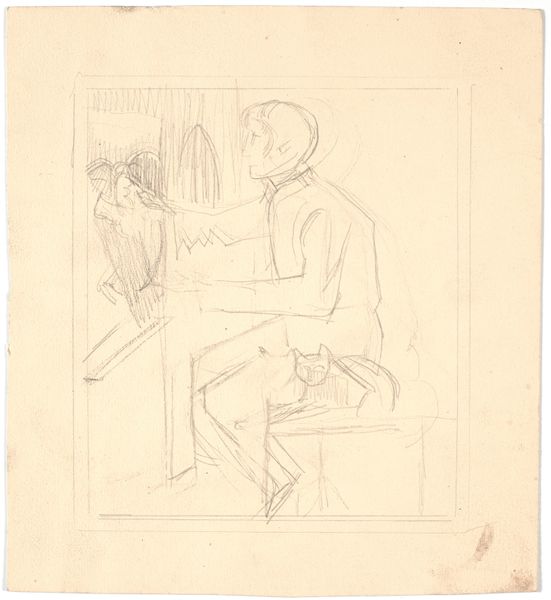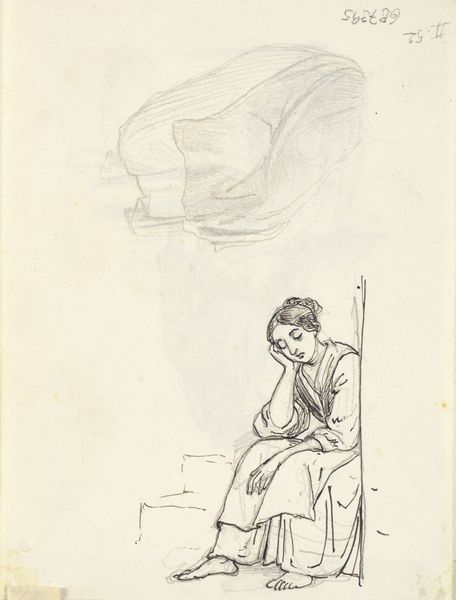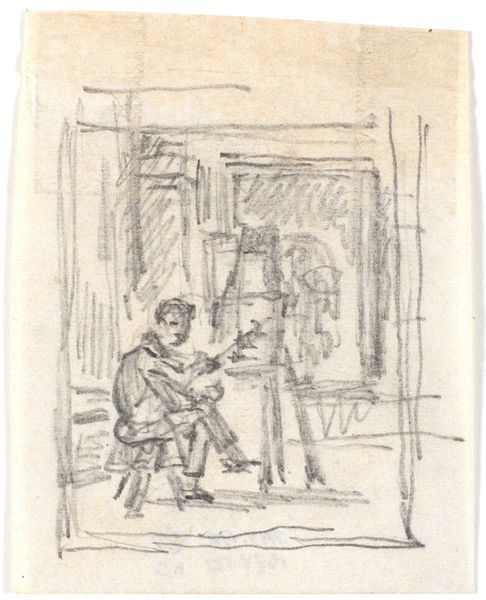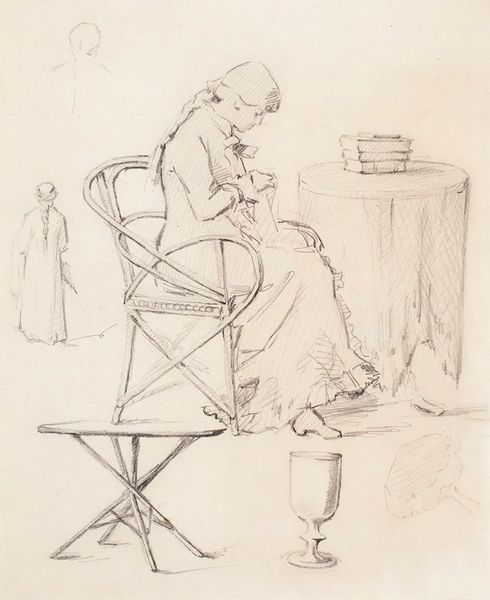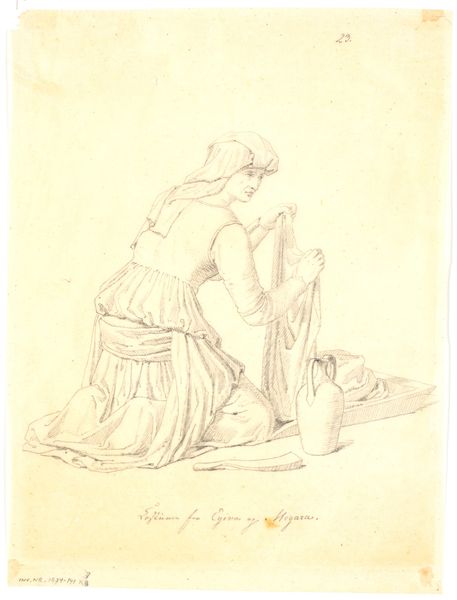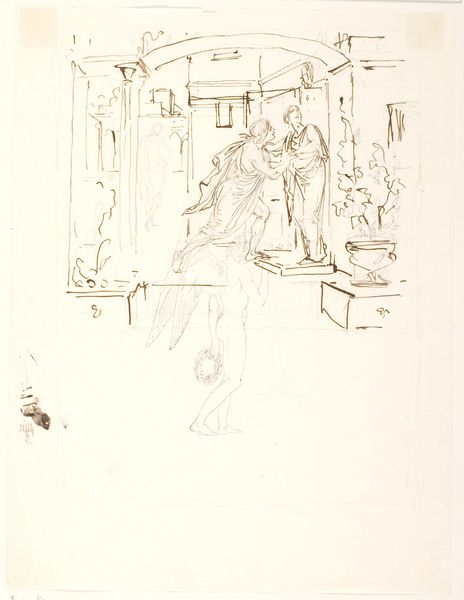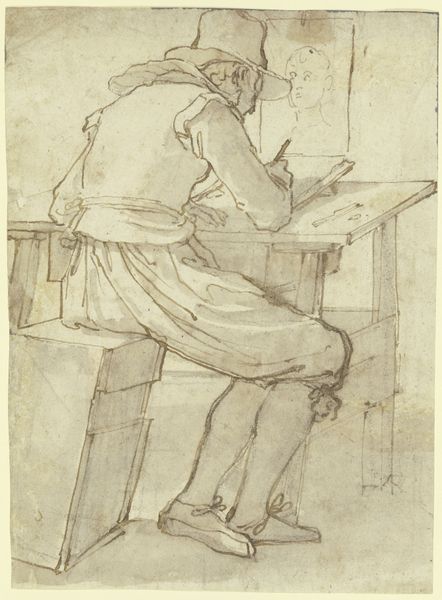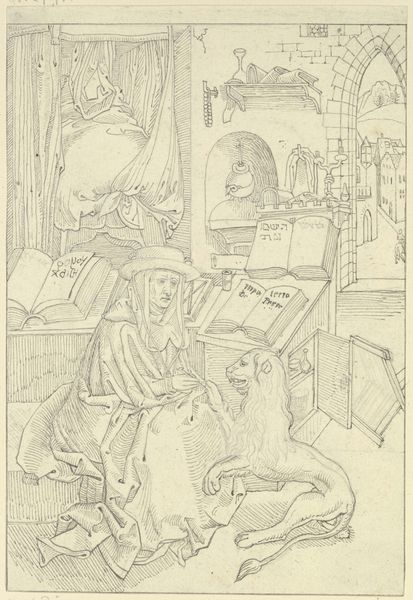
drawing, pencil
#
portrait
#
drawing
#
pencil
#
genre-painting
#
realism
Dimensions: 292 mm (height) x 224 mm (width) (bladmaal)
Curator: Martinus Rørbye created this drawing, “Gammel kone, der vinder garn,” or "Old woman winding yarn," in 1835. What strikes you initially about it? Editor: There's a stillness here. It's quiet. The gray tones, rendered solely in pencil, give a humble impression, like a memory fading to white. Curator: Rørbye's meticulous rendering brings forth broader concerns relating to women's work and ageing, it raises important considerations when contemplating the significance of such a seemingly banal scene in Danish Golden Age painting. Editor: True, the emphasis on labor intrigues me. You see her engagement with her tools and materials: the spindle, the yarn—it suggests a whole social world revolving around the production of textiles, the kind of daily existence so many women participated in but one rarely immortalized on paper with such clarity. Curator: And notice the contrast between her timeless task and the objects surrounding her: an hourglass suggests time’s relentless passage, while the caged bird introduces themes of freedom and domesticity in counterpoint with each other, all layered around the domestic toil this old woman's lived experience entails. It asks viewers to reflect on women’s evolving roles across Danish society. Editor: I am struck by how Rørbye depicts this domesticity through a precise observation of everyday life, of labor: the light reflecting from the taut yarns; the patient set of her face. It emphasizes the real: the skill of a drawing renders both her labor, the object she interacts with and invites broader social discourse on women. It’s grounded in lived experience and material production. Curator: Perhaps Rørbye encourages us to contemplate the intricate relationships between domesticity and national identity and prompts discussions about visibility, agency and labor and forces us to confront power dynamics during that period. Editor: Exactly. The emphasis of this image isn't grandeur, or exceptional moments, it centers a woman doing essential, but unheralded work. This work should be noted, even lauded! Curator: This is precisely how it engages our critical thinking. Editor: Absolutely, thank you. This careful observation really gives space to understand and consider material worlds in a specific period of time, I value this emphasis greatly.
Comments
No comments
Be the first to comment and join the conversation on the ultimate creative platform.
